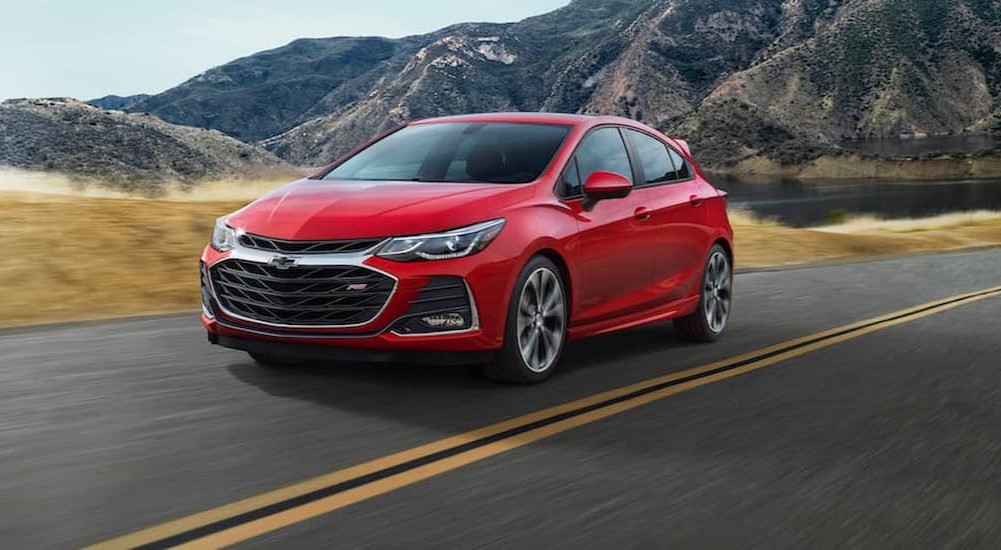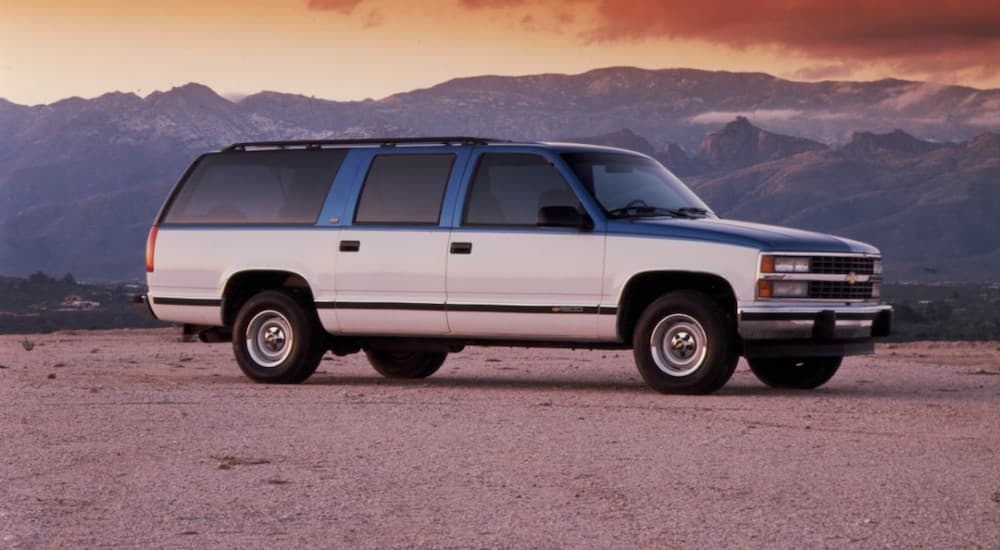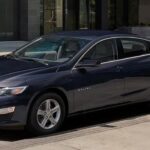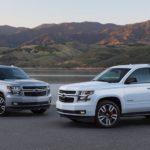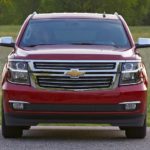If Chevrolet had a graveyard for every discontinued model, most of the headstones would have the name of a sedan inscribed on them. You might not even realize how many sedans have come and gone from the Chevy lineup, like the Cavalier or the Sonic. Ever heard of those? You’d be hard-pressed to find one at a used Chevy dealership — that’s how rare they’ve become. They’re relics of what feels like not just a different era for Chevy but an entirely different identity.
Bookending this lineup of lost sedans are SUVs. It’s the vehicle style that seems to have staying power for Chevy, but why? What was (and is) behind this movement away from small passenger cars and towards large ones? The explanation is layered, and you have to know a little bit about some of the discontinued sedans to get the full picture. Let’s take a look.
A Look at the Lost Sedans
At one point, sedans were a beacon of hope for the Chevy name. In fact, not many people know that right after General Motors came out of bankruptcy in 2009, the Sonic, a four-door sedan, was one of the first new vehicles Chevy made. Though originally released under a different name, the Sonic was a symbol of new life for the brand, and at the time, the Sonic’s appeal made a lot of sense. America was coming out of the Great Recession, so there was still a general desire to keep costs trimmed.
“Minimalist” was the word of the era, and the Sonic’s minimalist size, cost, and fuel consumption made it a very appealing vehicle. However, by 2020, Chevy would discontinue the Sonic due to a lack of demand and to make more room at its factories to create the Bolt EUV, an electrified crossover (an interesting change in direction, which we’ll touch on later).
Another lost automobile soul was the Impala, more of a muscle car/sports car blended with a sedan. Original models had massive V8s pumping away beneath their hoods, and that type of appeal made you want to show it off at a car show on drive-thru movie night. The Impala had a very long-standing existence in the Chevy family, too. It was first released in 1958 and would have several stints, on and off the market, all the way until 2020 when Chevy discontinued it.
The Cruze is another long-lost Chevy sedan. It first came out in 2008, alongside the Sonic, right in time for the compact car craze. Though drivers loved its spacious interior, smooth handling, and stylish exterior, the Cruze left the Chevy U.S. family in 2019 (it’s still sold in international markets). You’ll note that it’s just one year prior to the Impala and the Sonic leaving the market. These are only a few of the many compact cars Chevy kissed goodbye over the years, but we highlight them because their trajectories represented a historical shift…
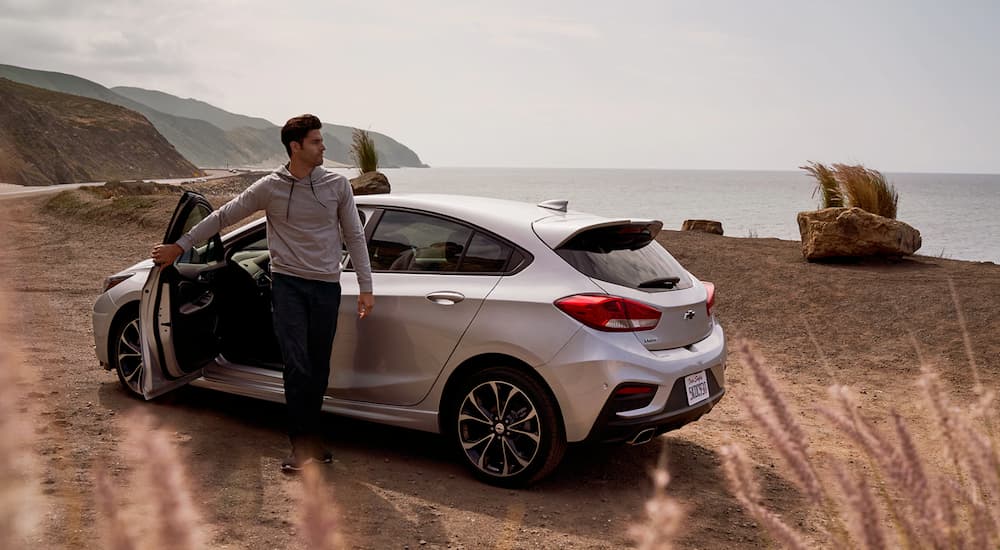
The SUV Comes Full Circle
We mentioned earlier that an SUV boom bookends the rise and fall of all of Chevy’s discontinued sedans, and that’s no coincidence. Right before the Great Recession (as is the case and possibly the cause of many recessions), people were spending. Baby boomers were at the age of raising little ones, and doing well enough that they wanted to show it. Why have a clunky minivan when you could transport everyone in the bold stylings of an SUV?
So, it’s the 1990s, and it’s the heyday of the Chevy Suburban and similar large SUVs. In fact, while the Suburban had been around for many decades at this point, it was in the 1990s that Chevy redesigned it to be less like a workhorse truck and more like a comfortable, luxury family vehicle. Many other manufacturers followed suit at the time, putting out these attractive living rooms on four wheels.
Now, we know why the SUV boom slowed down (the Great Recession). But…why is it back? In 2015, SUV sales surpassed those of sedans for the first time in decades. Larger vehicles, as a whole, started to make a comeback. By 2019, the top four-selling passenger vehicles were SUVs — the Toyota RAV-4, the Honda CR-V, the Nissan Rogue, and the Chevy Equinox.
Look closely, though, and you’ll notice that these are all small SUVs. That makes sense. We always ease into things, right? We weren’t going to jump from a small sedan being the top seller to a full-size SUV in a matter of a year. However…the transition did happen relatively quickly. By 2020, the Chevy Silverado would actually be one of the top-selling vehicles in the US; it would earn this ranking again in 2021.
While the Silverado is not an SUV, we mention its renewed popularity because it’s a big vehicle. It shares its essence with SUVs and, like SUVs, has very little in common with the sedans that have fallen out of favor. But why, in a matter of barely a decade, did Americans go from loving little sedans to big trucks and SUVs? There are theories…
The Large Vehicle Resurgence Has New Roots
There are a handful of theories as to why drivers are suddenly re-embracing large vehicles. But one of the strongest theories could be the way we see engines and the way we’re making them now. Put simply, large engines used to be considered cool. They were something to show off. It’s why the Impala did so well in its early years, with its roaring V8 engine. Eventually…we realized that those massive engines were contributing majorly to our pollution problems and leading to some costly bills at the gas pump.
And with the focus on pollution and rising gas prices coming all to a head around the same time (circa 2012), V8s went from sought-after trophies to things to avoid at all costs. The only good answer then was to simply drive sedans with their usual four-cylinder, fuel-efficient engines. But, people have always needed more passenger capacity and more capabilities…
So for a long time, drivers had to choose between fuel efficiency, rugged abilities, and passenger capacity. In other words, they could drive a sedan to save money on gas or enjoy a powerful large vehicle and pay big time at the pump. Now, SUVs and truck engines are changing. Chevy, for example, makes an electrified Silverado, an electrified Blazer (midsize SUV), and an electrified Equinox. So drivers don’t have to sacrifice fuel efficiency to get a larger vehicle. And it became clear pretty quickly that, with poor fuel efficiency no longer a concern, drivers wanted large vehicles. Hence, the rush towards larger vehicles in recent years.
So, Does Chevy Still Have Any Sedan?
Chevy still makes the Malibu, and when you look at this vehicle, you can see how it justifies its place. The Malibu doesn’t market itself as some super-compact, uber-fuel-efficient (though it does get good mileage) vehicle. Its demographic isn’t necessarily the driver on a budget or commuter looking to cut fuel costs. The Malibu sells a look and feel. It exudes laid-back sophistication. And if you think about it, it’s the only one of its kind in the Chevy family.
Chevy has fuel efficiency covered with its EVs, passenger capacity covered with its large SUVs, and rugged capabilities covered with its trucks and some SUVs. The Malibu promises a feeling of ease and head-turning looks. And there’s always a buyer for that. Chevy hasn’t said goodbye to small cars entirely. However, they seem to have picked up on something important: large vehicles have staying power, and small cars might be more like trends that come and go.
